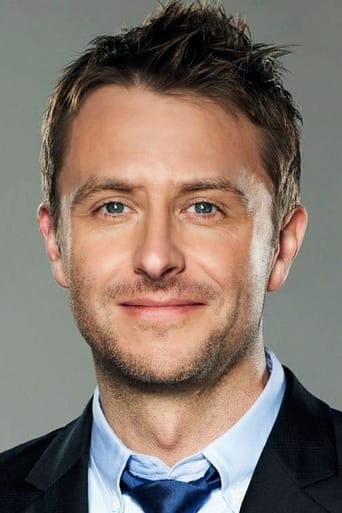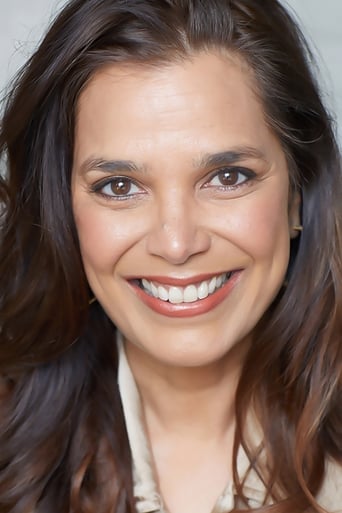










Technology: World War 2.0
World War 2.0 In spring 2007, Estonia's banks and newspapers were shut down by an organized wide-scale cyber-attack using 'botnets. WIRED writer Josh Davis heads to the site of the attack to find out what happened, who did it, and what the heck a "botnet" is. Photosynth Software designer Blaise Aguera y Arcas demonstrates the Photosynth software. Face Reader Ziya Tong meets children with Asperger’s Syndrome testing a new MIT media lab device that reads facial expressions. Cool Whip Chris Hardwick takes a look at the chemical guts of this iconic American dessert - Cool Whip. Dangerous Science WIRED Senior Editor Adam Rogers goes in search of an old-fashioned chemistry experience, and gets radiated in the processes. Chat: Paul Kedrosky Venture capitalist Paul Kedrosky connects investors with innovative scientific ideas. RoboDoc UCLA surgeon joins forces with his behemoth robotic colleague to operate on a cardiac patient.
Country: US
Language: En
Runtime: 55
Season 1:

World War 2.0 In spring 2007, Estonia's banks and newspapers were shut down by an organized wide-scale cyber-attack using 'botnets. WIRED writer Josh Davis heads to the site of the attack to find out what happened, who did it, and what the heck a "botnet" is. Photosynth Software designer Blaise Aguera y Arcas demonstrates the Photosynth software. Face Reader Ziya Tong meets children with Asperger’s Syndrome testing a new MIT media lab device that reads facial expressions. Cool Whip Chris Hardwick takes a look at the chemical guts of this iconic American dessert - Cool Whip. Dangerous Science WIRED Senior Editor Adam Rogers goes in search of an old-fashioned chemistry experience, and gets radiated in the processes. Chat: Paul Kedrosky Venture capitalist Paul Kedrosky connects investors with innovative scientific ideas. RoboDoc UCLA surgeon joins forces with his behemoth robotic colleague to operate on a cardiac patient.

Flotsam Found Retired oceanographer Curt Ebbesmeyer and his colleague tracked thousands of plastic toys that fell off a freighter during a storm to map current patterns. Their work leads them to an unbelievable discovery; a mass of swirling garbage in the North Pacific as large as the state of Texas. Fired Up Firefighters put cutting-edge firefighting tools and techniques to the test. Zone Creep Gardeners reap global warming benefits by being able to grow species that aren’t native to their neck-of-the-woods. Chat: Cameron Sinclair Architect Cameron Sinclair connects smart design with war refugees, disaster victims and poor people of the world. Lie Detectors WIRED Senior Editor Adam Roger takes on new fMRI lie detecting technology to see whether or not he’s even thinking of a lie. Miracle Gro Chris Hardwick unearths what's inside a product that helps our gardens grow.

Ball Busters At the University of Massachusetts-Lowell, a team of scientists make sure that every baseball that makes it into a Major League game has just the right amount of hardness and bounce. We take a trip to the lab to learn just how a mechanical engineer is keeping America's pastime honest. Got Clones? Ranchers and dairy farmers are ready to bring their cloned animal meat and milk to the public. Origami Master Robert Lang Origami Artist Robert Lang stops by to show Host Ziya Tong how math and science intersect to create complex art. Hot Wheels Wheelchairs that are nimble and light enough for basketball, racing, fencing... even ballet. Rosaly Lopes: Volcanologist Rosaly Lopes is a plantetary geologist with a thing for volcanoes. Sounds of Silence When he's not surfing the waves of the Big Island, physicist Milton Garces is studying sound waves at frequencies too low for humans to hear. The Making of El Corazon The heart is the rock-star in this music video. "Corazon" explains how the heart drives blood through the body to a zesty beat. What's Inside Your Dog? Chris Hardwick investigates the obscure components of something that can be found in man’s best friend.

Body Builders We visit with Dr. Anthony Atala of Wake Forest University and learn about how he's "cooking" and growing organs - unattached to human beings. Experiment Cave Deep underground, scientists are searching for neutrinos, the most elusive particles in the universe. Glow Stick Learn what puts the "glow" in glowsticks when host Chris Hardwick delves into the world of chemoluminescence. Meteorite Hunters Using a metal detector and a shovel, Adam Rogers tags along with a meteor hunter in search of rocks from outer space. James Gates: Theoretical Physicist James Gates, a John S. Toll Professor of Physics is well known for his work on supersymmetry, supergravity, and superstring theory. DIY UAVs WIRED Magazine's Chris Anderson visits with UAV (unmanned aerial vehicle) enthusiasts -- both amateur and professional -- to explore the fascinating nexus of aeronautics and robotics.

Blood Simple Be it A, B, AB or O, most of us don’t think about blood until we see it. Physicians at Virginia Commonwealth University are cracking the elusive problem and testing a synthetic blood that could be better at transporting oxygen than the real thing. Dr. Megavolt Particle physicist Austin Richards has a secret identity: Dr. MegaVolt. Ziya Goes to NextFest Host Ziya Tong takes us to the annual WIRED NextFest convention. What's Inside Your Mouth? Take a tour with Chris Hardwick of what's inside…your mouth. Virtual Paleontology Scientists use Computer tomography (CT) scanning to discover new species fused inside metamorphic rock. Chat: Jeff Hawkins Jeff Hawkins is famous for developing the software behind the Palm Pilot and Treo Smartphone, but his first love is neuroscience—specifically, the question of how the brain creates the mind. ShotSpotter Police departments across the country are installing gunshot surveillance systems that use hidden microphones and GPS-based sensors to figure out where and when guns are fired.

Biobanking These days, major universities, drug companies, and even a few governments maintain their own biobanks, which are basically places where scientists store human parts like brains, blood and livers to use in medical research. WIRED Science visits a biobank in Sun City, Arizona, where the residents are the bank's biggest donors. Audio Files Host Ziya Tong, with the help of some golden-ear experts, sets out to settle the debate over the digital/analog divide. High-Speed Photos Master crafter, Bre Pettis, shows host Ziya Tong how to hack the sluggish, 35mm camera into high-speed strobe. X-Prize The X Prize Foundation is attracting everyone from multimillion-dollar corporations to small-time inventors and creating a new world of revolution through competition. Peter Diamandis: Space Entrepreneur Leader in space travel, innovative entrepreneur and founder of the world-renowned X-Prize competition, Peter Diamandis joins host Adam Rogers to discuss how he's predicting the future by creating it. Peak Water We travel to the American southwest to see what the driest communities in the country are doing to keep the water flowing in the ever-burgeoning desert populations.

Satellite Shopping It's been 50 years since the first satellite, Sputnik, was launched into orbit. Now, communication satellites are used in everything from radio and television to Internet connections. Special correspondent Adam Rogers knows a good business opportunity when he sees it and tries get in on the satellite action. What's Inside Your Armpit Host Chris Hardwick takes a look at the chemical guts of everyday products and finds you're never more than two steps away from something surprising. The Business of Disease Who decides when a disease or syndrome gets a name, a drug and its very own TV commercial? Host Ziya Tong takes a look at Restless Leg Syndrome, one of the newest diseases to hit the big time. Touch Table The TouchTable looks like a giant iPhone that marries satellite imagery with other data sources. TouchTable, Inc. CEO Rocky Roccanova shows Ziya Tong how the device is used in intelligence gathering and law enforcement. UFO Astronaut Franklin Chang-Diaz has been in orbit more times than most people have been in airplanes. The retired NASA astronaut and head of the Ad Astra Rocket Company sits down with special correspondent Adam Rogers to discuss how his work is revolutionizing rocket engines. CHAT: Franklin Chang-Diaz We travel to the American southwest to see what the driest communities in the country are doing to keep the water flowing in the ever-burgeoning desert populations. Stressed Out With normal wear and tear, bridges and aircraft have their mettle tested constantly. Fortunately, inspectors monitor these stressed out bodies to avoid catastrophic failures like the Minneapolis bridge collapse last summer. We travel to Vermont and New Mexico to check out the state of the art in structural disaster prevention.

GeekDad: Japanese Robots Every family needs a hobby. For the Maru family of Nagoya, Japan, that hobby is crushing the competition in humanoid robot contests. We travel to the island country to get the heartwarming story of a father, his sons and their custom master/slave control harness. Deep Brain Stimulation We'll go under the knife with a Cardington, Ohio farmer who's getting electrodes implanted in his brain to alleviate the debilitating physical effects of a rare neurological disorder. Dr. Schrempp's Chem Lab Host Chris Hardwick learns how to turn cotton balls into smokeless gunpowder with chemist Chris Schrempp, star high school teacher and author of the book Bangs, Flashes, and Explosions. Where's My Rocketbelt? Rocketbelts went from being a grand military ambition to a classic James Bond moment, to part of a future that never materialized. WIRED SCIENCE travels to the first International Rocketbelt Convention in Niagara Falls to meet rocketbelt legends past and present CHAT: Anne Wojcicki and Linda Avey: Entrepreneurs With the help of 23andMe, a much anticipated Silicon Valley startup, you can get a look at your own genome - and discover your own secrets. Company co-founders, Anne Wojcicki and Linda Avey, sit down with special correspondent Adam Rogers to chat about how they're helping people make sense of their genetic information. Laser Archaeology Ben Kaycra grew up playing on ancient Mesopotamian ruins in his native Iraq. As an adult, he became a civil engineer and developed lasers that can scan buildings and translate them into three-dimensional blueprints. Host Ziya Tong takes a trip to Colorado's Mesa Verde National Park to see how this technology is changing the way archaeologists are mapping the ancient ruins of the Pueblo Indians. Video Lab: Keepon Dancing WIRED SCIENCE web crawlers scour the Internet to find the coolest science and tech videos. This week, a dancing yellow robot named Keepon takes to the streets of Tokyo with his creator in search of kindred bots to the tune of Spoon's Don't You Evah. But there's more to Keepon than meets the eye - he's a serious clinical research tool developed by child psychologist and roboticist Hideki Kozima for his research with autistic children



